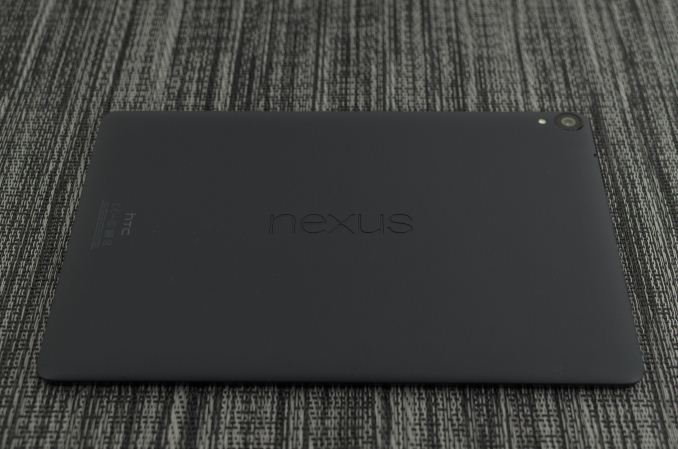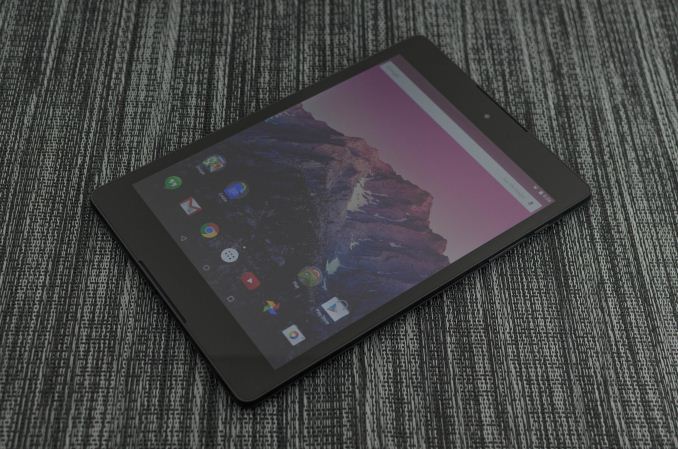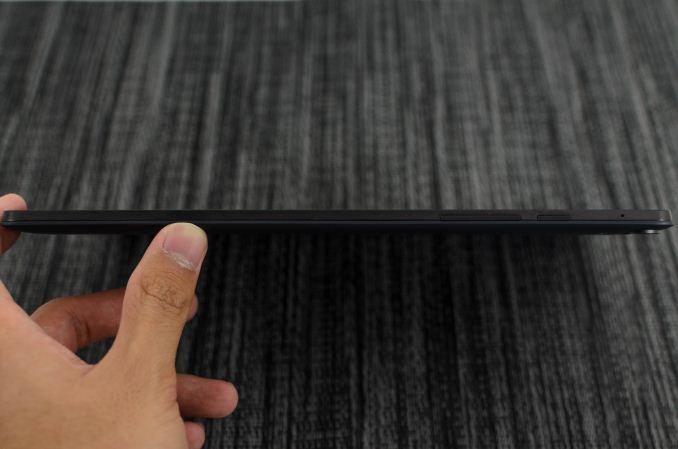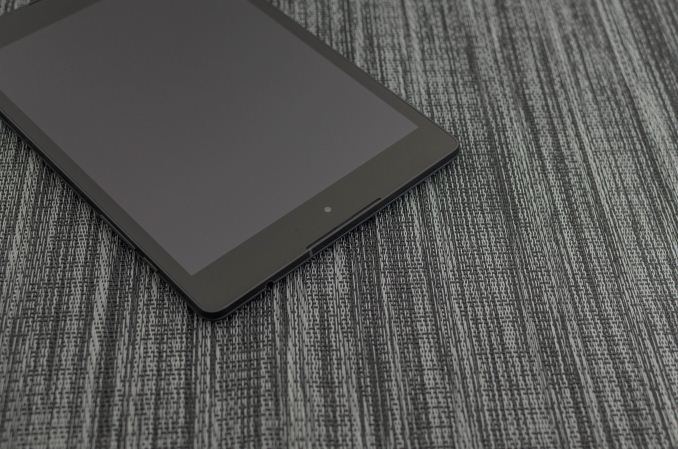Google Nexus 9: Preliminary Findings
by Joshua Ho on November 3, 2014 1:00 PM EST
For a few years now, Google has had a generally consistent tablet strategy. Instead of chasing after the ~10 inch tablet segment and focusing upon the high end, we’ve seen tablets closer to the ~7 inch display size at extremely low cost. While this has been an immensely successful strategy in driving hardware adoption, the formfactor made it possible for the tablet to be closer to a large phone than a small tablet. The flexibility of Android’s scaling system meant that an app designed for a phone worked acceptably well for a small tablet, even if the space efficiency was a bit poor. There’s no question that the Nexus 7 (2013) was and still is a great tablet, but even now it’s obvious that there’s a dearth of applications designed specifically for the larger display. The other issue is that of cost. With the Nexus 7 line, Google managed to integrate an incredible amount of hardware into a tablet priced well below the ~500 USD price point that the original iPad established. This is great for the consumer and no doubt great for Google, but the Nexus 7 line was good enough that there wasn’t much in the way of competition.
This brings us to the Nexus 9, Google’s attempt at changing the Android tablet space. From the start, this device seems to be intent on pushing the Android tablet to a more premium segment. Rather than a purely cost-optimized polymer design, we see the addition of an aluminum ring that runs around the side of the device, which definitely helps with in-hand feel. The tablet itself seems to have high-end aspirations as the launch platform for NVIDIA’s Tegra K1-64, which has two Denver CPU cores rather than the traditional 4+1 Cortex A15 setup, along with dual front-facing speakers and a large 9” display with 4:3 aspect ratio. I’ve included the basic specs in a spec sheet below, to avoid spending too much time going over the basics.
| Nexus 9 | |
| SoC | 2.3GHz 64-bit dual core Tegra K1 Denver SoC |
| RAM/NAND | 2GB LPDDR3 + 16/32GB NAND |
| Display | 8.9" 2048x1536 IPS LCD |
| Network | WiFi only or 2G / 3G / 4G LTE SKU |
| Dimensions | 153.68 x 228.25 x 7.95mm, 425g WiFi, 436g LTE |
| Camera | 8MP Rear Facing (IMX219) with F/2.4 aperture, 1.6MP FFC (OV9760) |
| Battery | 6700 mAh (25.46 Whr) |
| OS | Android 5.0 Lollipop |
| Connectivity | 802.11a/b/g/n/ac + BT 4.1, USB2.0, GPS/GNSS, NFC |
Unfortunately, in the case of the Nexus 9 while we can make some early observations the version of firmware that we received dates was built on August 29th, and in the time since it’s quite likely that there have been significant changes in all directions. We still don't have a newer build, so all the tests will be done on older firmware. The full review will have final numbers as it will be done using shipping firmware.
At any rate, the hardware of the Nexus 9 definitely fits the bill of a premium tablet. While for the most part every Nexus device in the past year has shared the same industrial and material design elements, HTC seems to have added a few extra touches to differentiate this product from other Nexus devices. The most obvious and prominent of these touches is the metal ring, which has a brushed texture similar to what we saw on the M8.
There are also dual front-facing speakers that flank the display, which are definitely great for video and music content when compared to a single speaker on the bottom or back of the device. However, for the most part the design is very much a Nexus device with its minimalistic design and soft-touch plastic back cover.













146 Comments
View All Comments
tipoo - Monday, November 3, 2014 - link
Maybe I spoke too soon, seeing the benchmarks, it seems to ping between great and average. Joshua, think what I said is coming into effect with spaghetti code?abhaxus - Monday, November 3, 2014 - link
Well, in the article he points out that the firmware is nearly two months old. I imagine there are more optimizations in the release FW.tipoo - Monday, November 3, 2014 - link
Yeah, hopefully it's all in the software. The CPU looks great when it does well, and the GPU absolutely is killer.Dribble - Monday, November 3, 2014 - link
When other sites are getting full reviews up anandtech can only manage a half hearted preview using an ancient build?What's happened?
Andrei Frumusanu - Monday, November 3, 2014 - link
The final firmware builds were supposedly pushed Sunday afternoon via OTA. Can't comment on what other sites do but our review will be on that firmware, and understandably it's impossible to do a review within 24 hours.melgross - Monday, November 3, 2014 - link
I wouldn't expect to much of a gain. A few percent here and there most likely.tential - Monday, November 3, 2014 - link
So go read those reviews then?Wait, you still came here to complain about anandtech's review not being up?
I'm going to guess it's the same reason I came here to see if anandtech's review was up. Because I wanted a more in-depth review. Depth takes time obviously so I guess we'll have to wait.
edwpang - Monday, November 3, 2014 - link
True, some reviews from other sites contains even less information than this preview. If Anandtech posts a review too quickly without fully testing the hardware, a lot more people will complain.chizow - Monday, November 3, 2014 - link
I guess it also really depends what you consider a "full review". Personally I think AnandTech is the only site that actually tries to do a comprehensive performance review from a true tech enthusiasts point of view.Now compare with these other consumer tech gadget sites that throw up 3 benchmarks for 3 devices with another 2500 words of subjective filler regarding aesthetics that anyone who walked into a Best Buy could ascertain on their own.
dragonsqrrl - Monday, November 3, 2014 - link
I'll wait for quality analysis. As the article stated the final firmware has only been available for a day, so that should tell you something about the "full reviews" you love so much.